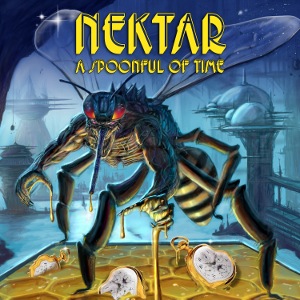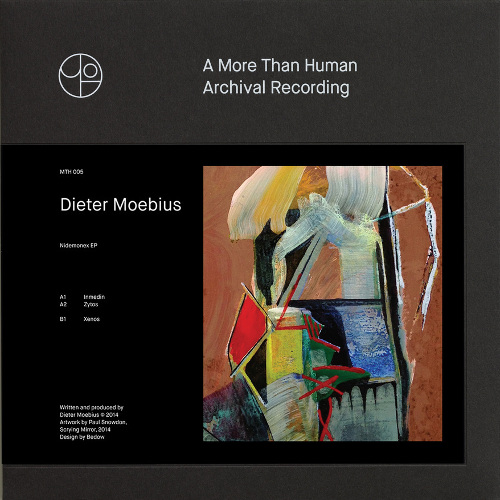Second Home, London
21-23 March 2014
First off, a caveat: ever since I first heard Bernard Parmegiani‘s music, played across the speakers at the greatest and most idiosyncratic of London’s lost record shops, These Records, I have been completely hypnotised by and utterly in thrall to his strange, hypnotic sound worlds, so I apologise in advance for any further lapses into purple prose of the “sonic cathedrals of sound” variety, or for failing to observe the necessary decorum in the face of proper terminology and critical distance.
So yes, it’s with the baggage of self-consciousness and trepidation I come to this three day celebration of Parmegiani’s oeuvre, reviewing through the prism of an unabashed enthusiast and amateur theorist. Like an eager puppy at a chamber recital, so will I attempt to get to grips with Parmegiani in a spirit of wide-eyed psychedelic abandon such that the music seems to demand, even where the arid high-art context in which it is sometimes unfairly placed might mitigate against such a reception.The London Contemporary Music Festival clearly has a predilection for cold and uncomfortable spaces, having promoted last year’s New Music Festival in the fashionably inhospitable environs of Peckham Car Park; this weekend’s celebrations take place in an open-plan brick bunker in East London, soon to be a digital hub and shared working space, the kind of thing which East London is crying out for. And so, unsure if I’m attending a very adventurous pre-launch for an office development or a high-end hi-fi demonstration, I locate for myself a prime spot on the austere wooden benches upon which to park my derriere, and from which I might best appreciate the wonders of the acousmonium’s peerless multiple speaker diffusion, here in the capable hands of fellow Groupe de Recherches Musicales alumni Jonty Harrison, Denis Smalley and Daniel Terrugi.
Preceding the music, we’re treated to a beautifully awry short film cutting together vintage television footage of Parmegiani, including an early TV appearance in his role as a mime artist (a field in which he trained up until, and initially in parallel with, his composition work before committing fully to the latter), acting out quotidian tasks in a peculiarly Gallic take on vintage TV game show What’s My Line? Footage of school children performing interpretative dance to Parmegiani’s monumental La Creation Du Monde describe their response to the work with gleeful bewilderment and disarming candour such that can only come of having just been pirouetting and colliding as ricocheting atoms coalescing into solid matter.Mime – the “division of space by the body” in the words of Marcel Marceau: doesn’t this in some way prefigure the mimetic nature of the recorded sound? The severance of the sound from its reified source, the famed “acousmatic” relation noted by the grandpère of musique concrete Pierre Schaffer, marks the beginning of the passage from mimesis to transformation to the contemporary fractal and dissimulated acoustic spaces of late capitalism. Schaffer’s radical expansion of musical territory seems an obverse to the other (R Murray) Schaeffer‘s moralistic finger-wagging at the schizophonic disjuncture of sound and source.
Taking this acousmatic ontology far beyond his tutor’s model of sound qua sound and expanding the semantics of acoustic typology and harmonic continua, transforming captured moments into what seems to become a form of sonic vitalism: sound stuff, at once of and yet at one remove from its everyday source, is animated by successions of complex tesselations and fractal recombinations – a visionary cutting into and pasting of the world, sutured back together in strange, sometimes allegorical forms.Far from being a foreboding exercise in the deconstruction and reassembly of acoustic sources, Parmegiani’s music reveals himself as something of a sensualist, each sonic iteration revelling in texture and timbre, gleefully traversing supposed electroacoustic convention, whether by subjecting contemporaneous psych-rock objets trouvées to startling proto-plunderphonic electronic wig-out treatment; or capturing moments of everyday life and rinsing them through fractalising, defamiliarising processes in combinations with hypnotic analogue synthesizer and sequencer cycles that are at once a million miles away from both arid formalism and hippy kitsch. Meticulously constructed and considered as they are, one thing Parmegiani can never be accused of is minimalism or mannerism.
One of Parmegiani’s earliest works, Violostries, is first to be performed, by violinist Aisha Orazbayeva. Trading virtuoso responses to treated recordings, she creates a by turns barbed and mellifluous call and response effect which – while intriguing, feels, at least to these ears – well – slight. Its treading the line between performance and process is a little too in thrall to the dramatics of Classical Performance (capital letters) to truly seduce, intrigue and rewire the perceptual apparatus like the best of Parmegiani’s acousmatic work.Walter Benjamin famously compared the treatment of the holy healer with his laying on of hands to that of the surgeon; the intervention of the knife an analogue to the intervention into life-as-such brought about by the prosthesis of the camera and the splicing and montage of film. Of all his peers under Schaeffer’s tutelage (Francois Bayle, Francois-Bernard Mache and perhaps with the exception of Michel Chion), Bernard Parmegiani’s work most explicitly addresses the questions of temporality implicit within the acousmatic process: the severance of the sound from its referent; and it does so with the most truly psychedelically disorientating results. The opening sequence of Dedans-Dehors sends a quotidian thud ping-ponging into an infinity tunnel that seems to mirror, fracture and reframe the captured moment from every conceivable angle.
Even where Parmegiani is at his most consciously lofty, say 1987’s aformentioned epic La Creation Du Monde, there’s no sense of transcendent grandeur or resolution – the work is always at once of the world and transformative of its very material thingness, conjuring from the muck of everyday life a peculiar and unhomely vitalism. Like Bergson‘s model of consciousness, Parmegiani’s mechanical isolation and reconstitution of the captured instant seems to reveal (or will into being) a massive hidden ecology of animate matter, one which at once defies and rewires everyday sonic consciousness.Finally, Hecker deserves a special mention for his exemplary performance on the Sunday night, following Dennis Smalley’s diffusion of La Creation Du Monde, making almost comically physical use of the high-end multi-channel sound rig to dizzying and disorientating effect, turning this posh bunker into a veritable roller-coaster ride, wanting only for the requisite terra-strobes and lasers his unabashedly maximalist hyper-rave deserves.
-Jim Backhouse-



